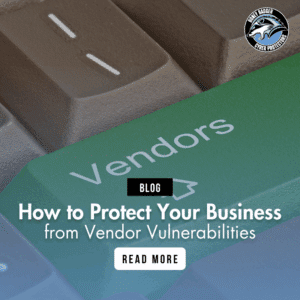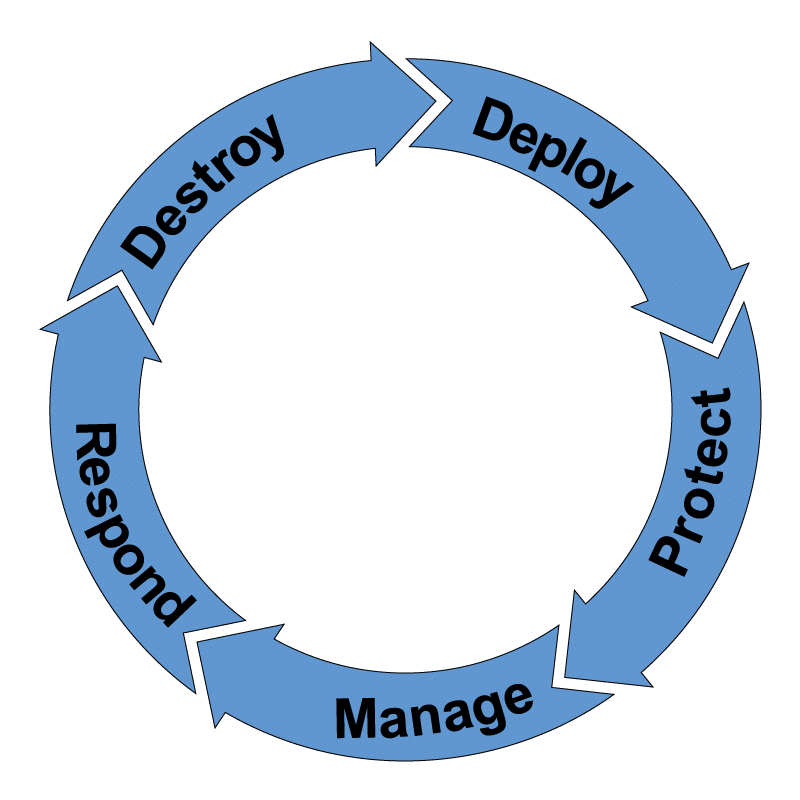How to Protect Your Business from Vendor Vulnerabilities
 Understanding the New Reality of Cyber Risk
Understanding the New Reality of Cyber Risk
Outsourcing and partnerships are essential, but they also introduce substantial cybersecurity risks. Whether you rely on third-party vendors for cloud services, payment processing, marketing platforms, or IT support, every one of those partnerships expands your attack surface.
Third-Party Breaches on the Rise: The Data You Can’t Ignore
Third-party vendors are now one of the most common attack vectors in cybersecurity incidents. Here’s what the data shows:
- 35.5% of all breaches in 2024 were linked to third-party access, according to SecurityScorecard’s 2025 Global Third-Party Breach Report.
- 30% of confirmed breaches analyzed in Verizon’s 2025 Data Breach Investigations Report (DBIR) involved a third party – a 100% increase from the previous year.
- A Ponemon Institute/Imprivata study found that 47% of organizations experienced a breach or cyberattack over the past year tied to a third-party partner accessing their network.
Industry-Specific Insights:
- Retail & Hospitality: 52.4% of breaches traced to third parties
- Technology Sector: 47.3%
- Energy & Utilities: 46.7%
- Healthcare: While only 32.2% of third-party breaches originated in healthcare, 41.2% of all recorded third-party breaches in 2024 impacted healthcare organizations, making it the most affected sector by volume.
What Makes Third-Party Risk So Dangerous?
Third-party breaches are especially damaging because they are:
- Harder to Detect: Your visibility into vendor systems is limited.
- Difficult to Contain: Vendors often have privileged access to your environment.
- Widespread in Impact: One weak vendor can affect thousands of downstream organizations.
Below are some of the most common ways third-party partners can compromise your security.
1. Third-Party Access and Privilege Abuse
Vendors often require access to internal systems to deliver services. But if a partner’s credentials are compromised or access controls are poorly managed, bad actors can pivot into your environment undetected.
2. Weak Vendor Cybersecurity Posture
If your vendor lacks basic security controls like MFA, endpoint protection, or employee awareness training, their weaknesses become your exposure. This is especially dangerous when vendors handle sensitive or regulated data on your behalf.
3. Vulnerabilities in Third-Party Technology
Using a SaaS product? Hosting on a third-party cloud platform? If a vulnerability exists in their software or infrastructure, you may be vulnerable, whether you know it or not.
4. Data Hosting and Storage Risks
Even reputable cloud storage providers can fall victim to breaches. Your critical business information could be exposed if your vendor doesn’t encrypt data properly or fails to segregate environments.
Best Practices to Mitigate Third-Party Risk
Here’s how you can better protect your organization:
1. Conduct Thorough Due Diligence
Before onboarding any vendor, conduct a full security risk assessment. Look for:
- Compliance certifications (e.g., SOC 2, ISO 27001, HITRUST)
- History of data breaches or security violations
- Details of their incident response plan
2. Strengthen Your Contracts
Ensure every vendor contract includes:
- Specific security standards they must uphold
- Breach notification clauses (how fast they must notify you)
- Audit rights and access for security reviews
3. Continuously Monitor Vendor Security Posture
Third-party risk is not a “set and forget” activity. Monitor your vendors using:
- Automated security rating services
- Annual penetration testing or vulnerability assessments
- Continuous dark web surveillance for leaked credentials
4. Implement a Tiered Risk Strategy
Not all vendors pose the same level of risk. Categorize vendors by access level and data sensitivity:
- Tier 1: Mission-critical vendors with access to PII or PHI
- Tier 2: Partners with indirect access or business-critical functionality
- Tier 3: Low-risk suppliers
Focus your due diligence and monitoring on Tier 1 vendors.
5. Build a Vendor Incident Response Plan
Include third-party breach scenarios in your tabletop exercises. Your plan should define:
- Communication protocols (internal and external)
- Roles and responsibilities for breach containment
- Reporting timelines to regulators or customers
Partnering for Risk Management: MSSPs and Vendor Oversight
Given the rising complexity, many organizations are turning to Managed Security Service Providers (MSSPs) for support. Here’s why:
MSSPs Offer:
- 24/7 Monitoring: They watch your vendor ecosystem around the clock
- Expert Analysis: They analyze vendor cyber hygiene using up-to-date tools
- Governance Support: MSSPs help draft, review, and enforce contract language around security
Reclamere’s SCR360 program is purpose-built for this need. It combines proactive risk assessments, continuous vendor monitoring, and compliance support to help IT and Cybersecurity leaders gain visibility and control over their supply chain risk.
The Stakes Are Too High
Cyberattacks are no longer just about your perimeter – they’re about your ecosystem.
With nearly 1 in 3 breaches now tied to a third-party vendor, this is not a side issue. It’s a core cybersecurity priority. You can’t afford to treat vendor risk management as an annual checkbox. You need continuous oversight, actionable insights, and strategic leadership.
Reclamere’s SCR360 program delivers just that. Let’s strengthen your vendor ecosystem before a partner becomes your liability.








